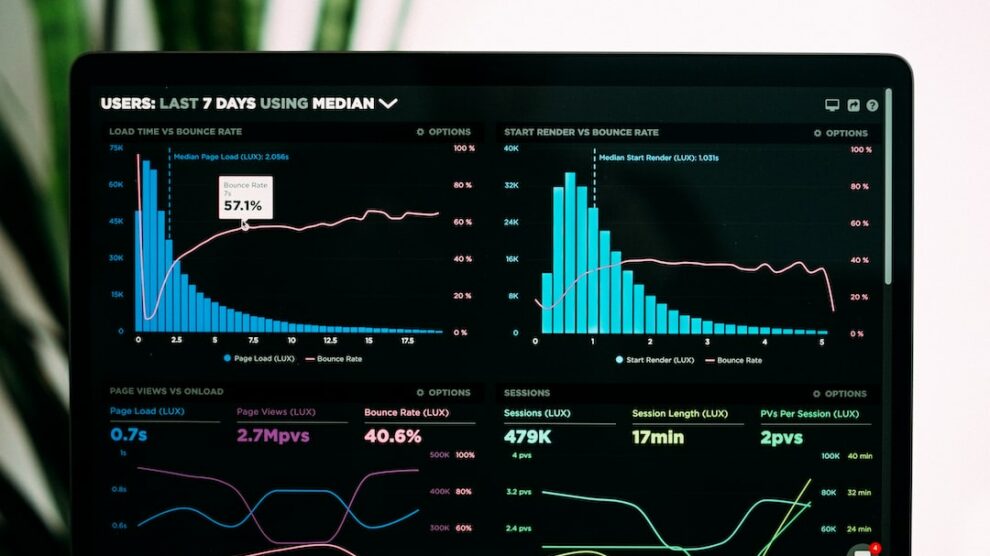In today’s digital landscape, having a well-optimized website is crucial for online success. One aspect of website optimization that often gets overlooked is technical SEO. Technical SEO optimization involves optimizing the technical elements of a website to improve its visibility and performance in search engine rankings. In this article, we will explore the importance of technical SEO optimization, its impact on search engine rankings, and how to conduct a technical SEO audit for your website.
What is Technical SEO Optimization?
Technical SEO optimization refers to the process of optimizing the technical elements of a website to improve its visibility and performance in search engine rankings. It involves making changes to the website’s structure, code, and settings to ensure that search engines can crawl, index, and understand the content effectively.
Examples of technical SEO elements include website speed, mobile optimization, site architecture, URL structure, XML sitemaps, robots.txt files, canonical tags, structured data markup, and more. These elements play a crucial role in how search engines perceive and rank a website.
Why is Technical SEO Optimization Important for Your Website?
Technical SEO optimization is important for several reasons. Firstly, it helps search engines understand and index your website’s content more effectively. By optimizing technical elements such as site architecture and URL structure, you make it easier for search engine crawlers to navigate and index your website.
Secondly, technical SEO optimization improves website performance and user experience. Factors such as site speed and mobile optimization directly impact how users interact with your website. A slow-loading website or one that is not mobile-friendly can lead to high bounce rates and lower user engagement.
The Role of Technical SEO in Search Engine Rankings
Technical SEO plays a crucial role in determining a website’s search engine rankings. Search engines use complex algorithms to analyze websites and determine their relevance and authority for specific search queries. Technical SEO optimization helps search engines understand the content and structure of a website, which in turn improves its chances of ranking higher in search results.
Search engines prioritize websites that are well-optimized from a technical standpoint. A website that loads quickly, has a clear site architecture, and is mobile-friendly is more likely to rank higher in search results compared to a website with technical issues.
Understanding Technical SEO Elements: Crawling, Indexing, and Rendering
To understand the importance of technical SEO optimization, it’s essential to understand the concepts of crawling, indexing, and rendering.
Crawling refers to the process by which search engine bots discover and navigate through web pages. These bots follow links from one page to another, collecting information about the content and structure of each page. By optimizing technical elements such as XML sitemaps and robots.txt files, you can guide search engine bots to crawl and index your website more effectively.
Indexing is the process of storing and organizing the information collected by search engine bots during crawling. When a web page is indexed, it becomes part of the search engine’s database and can be retrieved for relevant search queries. By optimizing technical elements such as URL structure and canonical tags, you can ensure that search engines index your website’s content accurately.
Rendering refers to how a web page is displayed to users. Search engine bots need to be able to render a web page accurately to understand its content fully. By optimizing technical elements such as JavaScript and CSS files, you can ensure that search engine bots can render your web pages correctly.
How to Conduct a Technical SEO Audit for Your Website

Conducting a technical SEO audit is an essential step in optimizing your website for search engines. It involves analyzing your website’s technical elements to identify any issues or areas for improvement. Here are some steps to perform a technical SEO audit:
1. Start with a comprehensive website crawl: Use a tool like Screaming Frog or SEMrush Site Audit to crawl your website and identify any technical issues. This will give you a detailed overview of your website’s structure, URLs, meta tags, and more.
2. Check for indexing issues: Use Google Search Console to check if your website is being indexed properly. Look for any crawl errors or indexing issues that may be preventing search engines from accessing and indexing your content.
3. Analyze site speed: Use tools like Google PageSpeed Insights or GTmetrix to analyze your website’s speed performance. Look for any factors that may be slowing down your website, such as large image files or excessive JavaScript.
4. Review mobile optimization: Test your website on different mobile devices and screen sizes to ensure that it is mobile-friendly. Check for any issues with responsive design, mobile usability, or mobile page speed.
5. Analyze site architecture: Review your website’s site architecture to ensure that it is logical and easy to navigate. Check for any broken links, orphaned pages, or duplicate content that may be affecting your website’s SEO.
Common Technical SEO Issues and How to Fix Them
There are several common technical SEO issues that can impact a website’s visibility and performance in search engine rankings. Here are some of the most common issues and how to fix them:
1. Duplicate content: Duplicate content occurs when the same content appears on multiple URLs. This can confuse search engines and dilute the authority of your website. To fix this issue, use canonical tags to indicate the preferred version of a page and redirect duplicate URLs to the canonical version.
2. Broken links: Broken links occur when a link on your website leads to a page that no longer exists or returns an error. Broken links can negatively impact user experience and SEO. To fix this issue, regularly check for broken links using tools like Screaming Frog or Google Search Console and update or remove them.
3. Slow page speed: Slow page speed can lead to high bounce rates and lower user engagement. To improve page speed, optimize image sizes, minify CSS and JavaScript files, enable browser caching, and use a content delivery network (CDN) to distribute your website’s content across multiple servers.
4. Mobile usability issues: With the increasing use of mobile devices for internet browsing, it’s crucial to ensure that your website is mobile-friendly. Common mobile usability issues include small font sizes, unresponsive design, and touch elements that are too close together. To fix these issues, use responsive design, optimize font sizes for mobile devices, and ensure that touch elements are easily clickable.
The Impact of Site Speed on Technical SEO and User Experience
Site speed is a critical factor in both technical SEO and user experience. From a technical SEO standpoint, search engines prioritize websites that load quickly. A slow-loading website can negatively impact your search engine rankings and organic search visibility.
From a user experience standpoint, site speed plays a crucial role in how users interact with your website. Studies have shown that users have little patience for slow-loading websites and are more likely to abandon a page if it takes too long to load. A fast-loading website, on the other hand, can lead to higher user engagement, longer session durations, and increased conversions.
To improve site speed, optimize image sizes, minify CSS and JavaScript files, enable browser caching, and use a content delivery network (CDN) to distribute your website’s content across multiple servers.
Mobile Optimization and Technical SEO: Best Practices
With the increasing use of mobile devices for internet browsing, mobile optimization has become a crucial aspect of technical SEO. Here are some best practices for mobile optimization:
1. Use responsive design: Responsive design ensures that your website adapts to different screen sizes and devices. This provides a consistent user experience across desktops, tablets, and smartphones.
2. Optimize font sizes: Font sizes that are too small can make it difficult for users to read your content on mobile devices. Optimize font sizes to ensure that they are legible on smaller screens.
3. Ensure touch elements are easily clickable: On mobile devices, touch elements such as buttons and links should be large enough and spaced out properly to ensure easy navigation and interaction.
4. Optimize images for mobile: Images that are too large can slow down your website’s loading speed on mobile devices. Optimize images by compressing them without sacrificing quality.
How to Optimize Your Website for Google’s Core Web Vitals
Google’s Core Web Vitals are a set of metrics that measure the user experience of a website. These metrics include Largest Contentful Paint (LCP), First Input Delay (FID), and Cumulative Layout Shift (CLS). Optimizing your website for Core Web Vitals can improve its search engine rankings and user experience. Here are some tips to optimize your website for Core Web Vitals:
1. Improve page speed: Page speed is a crucial factor in Core Web Vitals, particularly the Largest Contentful Paint (LCP) metric. Optimize your website’s page speed by optimizing image sizes, minifying CSS and JavaScript files, enabling browser caching, and using a content delivery network (CDN).
2. Reduce server response time: Server response time is another important factor in Core Web Vitals. Reduce server response time by using a reliable hosting provider, optimizing your website’s code, and enabling caching.
3. Minimize layout shifts: Cumulative Layout Shift (CLS) measures how much the layout of a web page shifts during loading. Minimize layout shifts by ensuring that elements on your web page have fixed dimensions and by using proper image and video loading techniques.
The Future of Technical SEO: Machine Learning and AI
The future of technical SEO lies in the integration of machine learning and artificial intelligence (AI). Machine learning algorithms can analyze vast amounts of data and identify patterns and trends that humans may miss. AI-powered tools can automate the process of technical SEO optimization, making it more efficient and effective.
Predictions for the future of technical SEO include the use of AI-powered chatbots for customer support, voice search optimization, and personalized search results based on user behavior and preferences. As search engines become more sophisticated, technical SEO will continue to evolve to meet the changing needs and expectations of users.
In conclusion, technical SEO optimization is a crucial aspect of website optimization that should not be overlooked. By optimizing the technical elements of your website, you can improve its visibility and performance in search engine rankings, as well as enhance user experience. Conducting a technical SEO audit, fixing common technical SEO issues, optimizing site speed and mobile usability, and staying up to date with Google’s Core Web Vitals are all essential steps in ensuring the success of your website in the digital landscape.
FAQs
What is Technical SEO Optimization?
Technical SEO Optimization refers to the process of optimizing a website’s technical aspects to improve its search engine ranking and visibility. It involves optimizing website speed, mobile-friendliness, website architecture, and other technical factors that affect search engine crawling and indexing.
Why is Technical SEO Optimization important?
Technical SEO Optimization is important because it helps search engines understand and crawl your website more effectively. By optimizing your website’s technical aspects, you can improve your website’s visibility and ranking on search engine results pages (SERPs), which can lead to increased traffic and conversions.
What are some technical SEO factors that affect website ranking?
Some technical SEO factors that affect website ranking include website speed, mobile-friendliness, website architecture, URL structure, internal linking, schema markup, XML sitemap, robots.txt file, and HTTPS security.
How can I improve my website’s technical SEO?
To improve your website’s technical SEO, you can start by optimizing your website speed, making your website mobile-friendly, improving your website architecture, optimizing your URL structure, using internal linking effectively, implementing schema markup, creating an XML sitemap, optimizing your robots.txt file, and securing your website with HTTPS.
What is website speed optimization?
Website speed optimization refers to the process of improving your website’s loading speed. This can be achieved by optimizing images, minifying CSS and JavaScript files, reducing server response time, and using a content delivery network (CDN).
What is mobile-friendliness optimization?
Mobile-friendliness optimization refers to the process of optimizing your website for mobile devices. This can be achieved by using a responsive design, optimizing images for mobile devices, and ensuring that your website is easy to navigate on a mobile device.
What is website architecture optimization?
Website architecture optimization refers to the process of organizing your website’s content and pages in a logical and hierarchical manner. This can be achieved by creating a clear navigation structure, using breadcrumbs, and optimizing your website’s internal linking.









Add Comment